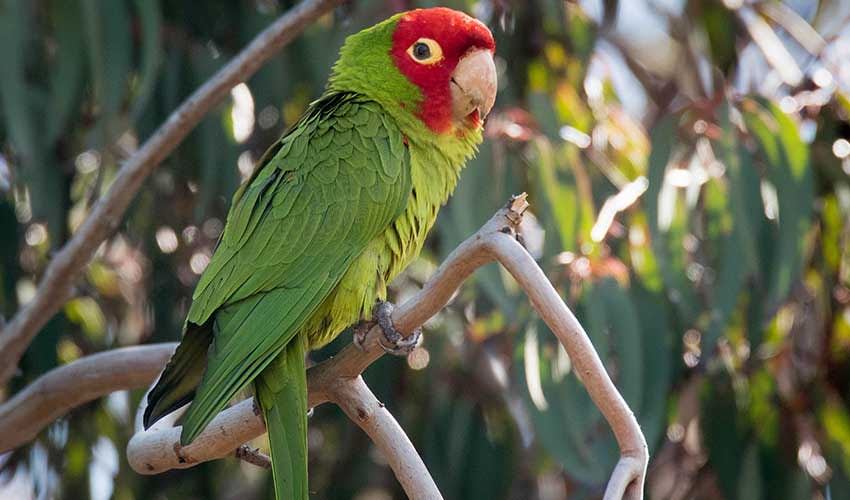Native to southwestern Ecuador and northwestern Peru, this parakeet is long, with bright green plumage and vivid red markings on its face, forehead, and sometimes shoulders. Its bold splash of red against the green makes it stand out among parrot species, and its high-pitched calls are often heard before the bird itself is seen. Like other members of its genus, it has a slender body, a long, tapered tail, and a strong, hooked bill perfect for cracking seeds and nuts.
In the wild, these parakeets live in dry forests, scrublands, and open woodlands, where they forage in noisy flocks for seeds, fruits, berries, and blossoms. They are extremely social birds, roosting and flying together in tight groups, and they communicate constantly with loud, sharp calls that echo across valleys and towns alike. This social nature has also helped them thrive outside of their native range—especially in cities. Escaped or released pet birds have established wild flocks in the United States (notably San Francisco), Spain, and even Florida, where they’ve become local celebrities.
In their native range, they nest in tree cavities, often returning to the same spot year after year. Both parents take turns incubating the eggs and feeding the chicks. Their family bonds are strong, and pairs often remain together for life. Unfortunately, in Ecuador and Peru, their populations have declined significantly due to habitat loss and trapping for the pet trade. Ironically, while they are vanishing in their homeland, their introduced flocks in cities like San Francisco are thriving, serving as ambassadors for their species.
Distribution
 Chile
Chile Colombia
Colombia Ecuador
Ecuador Peru
Peru Puerto Rico
Puerto Rico Spain
Spain United States
United StatesAnything we've missed?
Help us improve this page by suggesting edits. Glory never dies!
Suggest an editGet to know me
Terrestrial / Aquatic
Altricial / Precocial
Polygamous / Monogamous
Dimorphic / Monomorphic (size)
Active: Diurnal / Nocturnal
Social behavior: Solitary / Pack / Flock
Diet: Carnivore / Frugivore / Omnivore / Piscivorous / Insectivore
Migratory: Yes / No
Domesticated: Yes / No
Dangerous: Yes / No




